One of our upcoming books that I’m most excited about is a new middle grade novel in verse called Etched in Clay, out this January. Etched in Clay, by Andrea Cheng, explores the life of Dave the Potter, an enslaved man from South Carolina who learned how to read and write. Dave is famous for inscribing his own poetry and thoughts on the pottery that he made – a very daring thing in light of the harsh anti-literacy laws for slaves in place at the time.
Author and artist Andrea Cheng used woodcuts to create the delicate spot art for Etched in Clay. Here’s how she did them:
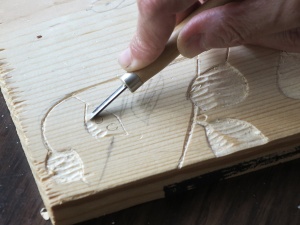
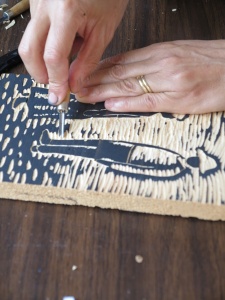

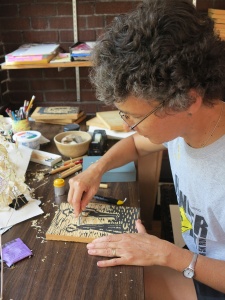
“After carving the wood blocks, I roll them with ink…

…and print them by placing paper on top of the block…

…rubbing it…

…and then pulling the print off the block.

I usually print several times because each print is different, and I’m trying to get one that is evenly inked.
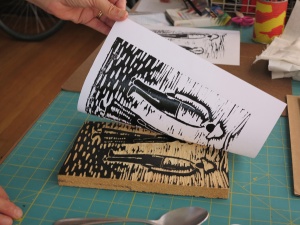

Then, when I have a couple of good prints, I ‘clean’ the block by printing with scrap paper (green tissue in picture). I sometimes use these light prints for collages or other artwork.”

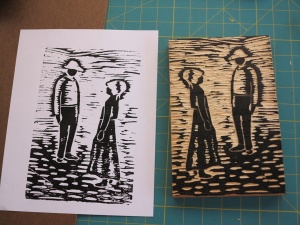
Here’s what the final image looks like in the book:
Kirkus Reviews has just given Etched in Clay its first starred review, calling it “at once intimate and universal; the riveting story of an unforgettable life lived during an unbelievable time.” Learn more about the book, or like us on Facebook to see more pictures of Andrea’s illustrations.
Want to see more artwork in progress? Illustrator Beth Lo shares how to paint a ceramic plate.



Oh… this looks so great! I can’t wait.
I had the pleasure of seeing one of Dave the Potter’s pots a few years ago. It was SO impressive-big enough that my son could have climbed into it! As a potter, what I really wanted to do was run my fingers up the inside of that pot and feel the grooves where he had “pulled up the wall.” (It’s a habit of potters- most of us do this to other people’s pots. In this case it would have been a direct connection to history.) Alas, for some reason, museums don’t let you touch the art. 🙂
In college I had a roommate who always touched the art in museums (after he made sure the guard wasn’t looking). He said it gave him a tactile connection to the art.
Oh my, Jason!